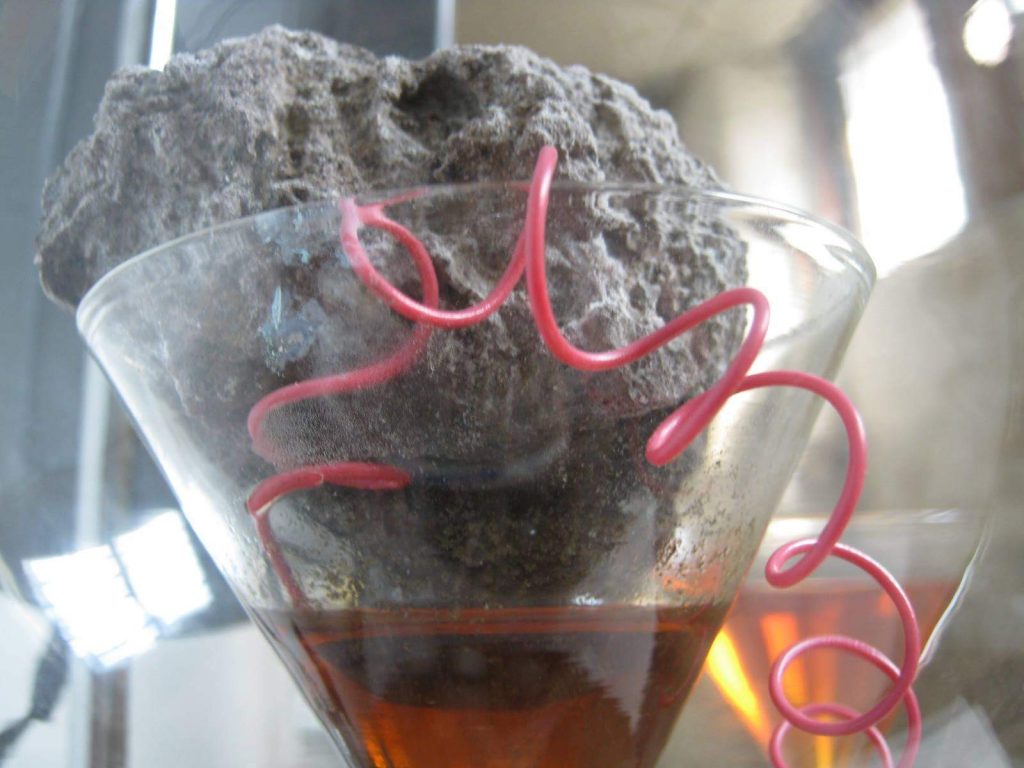Abiogenesis of Acari 2007 was a recreation of an electrochemical experiment performed by Andrew Crosse (1784-1855). Crosse used a series of Leyden jars to provide an electrical current to continually charge a piece of volcanic pumice that was left soaked in a liquid chemical solution. During the experiment, Crosse observed life forms that seemed to be emerging from the stone, which he referred to as Electrical Acari. This work recreates the conditions of the experiment and creates a habitable environment for his so-called Electrical Acari.

Above: Andrew Crosse’s original experiment. See also Memorials, Scientific and Literary, of Andrew Crosse, the Electrician https://play.google.com/books/reader?id=CeUKAAAAYAAJ&pg=GBS.PP8&hl=en
I was particularly interested in the experiment because of the drawings of the electrical acari he observed. To me, these look a lot like Stratiolaelaps scimitus a harmless soil-dwelling soil mite that I have seen in my own experiments and terrariums. The question is, why were these mites inside the experiment, and what were they feeding on? I hypothesised that the substance he was using was somehow attractive for these mites; perhaps they were also attracted to the electromagnetic fields. The liquid substrate I used as the electrolyte contained a mixture of carbohydrates, sugars, and salts, which could provide additional sustenance for these kinds of mites and fluid for electro-crystallisation.




